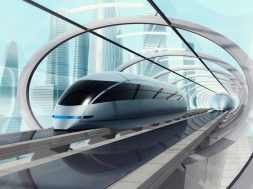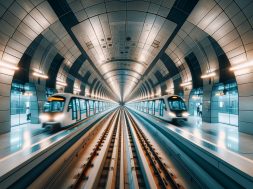“Green Buildings may seem like a tricky investment at first, but the rewards are great over time”, explains Neeraj Gulati, MD, Assotech Realty
Over the years, the activities taken up by human beings in the process of evolving with the environment and entering into the modern era of industrialisation, has gradually disturbed the ecological balance. Carbon dioxide concentration in the air has increased due to the emissions from cars, airplanes, power plants, industries etc. Forests have been cut down paying way for agriculture, industries and cities. The supply of clean and fresh water is steadily diminishing. All these together are contributing towards ‘global warming’.
Building a Green WorldThe economies of the World are now trying to maintain nature’s balance by focussing on various environmental initiatives like promoting rainwater harvesting, use of renewable sources of energy like wind, solar energy and recycling of waste products. Another step forward in the direction is the advent of ‘Green Buildings’.
Buildings are energy-guzzlers, accounting for 30-40 per cent of global energy use. This means that improving energy efficiency there can help reduce global warming. It can not only cut the power bill by as much as half, but also boost employee productivity by 12-15 per cent.
By definition, ‘Green Building’ is: “A structure that uses the 5 elements of nature namely wind, water, earth, fire and sky to optimise energy efficiency, conserve natural resources, generate less waste, use less water and provide healthier spaces for occupants, as compared to conventional buildings”. It recycles and manages its own waste particularly through water recycling and treatment and keeps the indoor air free from germs by air quality control. Having a green building helps save running costs and takes care of the health of the occupants.
Today, though the practices or technologies employed in green building are constantly changing and may differ regionally, there are some basic fundamental principles that remain same, from which the method is derived. These include energy efficiency, water efficiency, materials efficiency, indoor environmental quality enhancement, operations and maintenance optimisation and waste and toxics reduction.
Resource EfficiencyThe foundation of any green building project is rooted in the concept and design stages. A variation of every design variable may affect the environment during the building’s relevant life-cycle stages. Some buildings also include landscape oriented infrastructure, sustainable site planning and the use of energy efficient, eco-friendly material and construction practices. Such buildings are designed keeping in mind the idea of optimally using the renewable energy resources. Also, the construction is focused on a healthy working environment which is ergonomically designed, comprising of all fire safety, detection and fighting as per the international norms. With a proper synergistic design, individual green technologies may work considerably to produce a greater cumulative effect.
The era of green building has brought with it a trend in HVAC (heating, ventilation and air-conditioning) design, where the new technologies and strategies are adopted to achieve higher energy performance. Buildings rely on properly designed ventilation systems to provide adequate ventilation of cleaner air from outdoors or re-circulated, filtered air. Proper control of moisture accumulation is ensured through well insulated and tightly-sealed envelope and airflow control. Green buildings protect the environment of atmospheric emissions like greenhouse gases, global warming, acid rain, discharge of harmful liquid effluents and solid wastes. These features give the structure maximum indoor environment quality wherein a person inside the structure has better air quality, thermal regime, illumination, acoustics and visual aspects. Also, these buildings are made on such locations that limit the vehicular traffic to increase the green areas and harness maximum daylight and views.
High-efficiency windows and insulation in walls, ceilings, and floors increase the efficiency of the barrier between conditioned and unconditioned space. Effective window placements can provide more natural light and lessen the need for electric lighting during the day. Onsite generation of renewable energy through solar power, hydro power, wind power and biomass can significantly reduce the environmental impact of the building. Now-a-days, green buildings use solar heating to provide hot water. Hi-tech chillers are used to minimise the energy intake, and the air-conditioning equipment used is ozone free.
Furthermore, reducing water consumption and protecting its quality are important factors in sustainable building. Wastage of water may be minimised by utilising water conserving fixtures such as ultra-low flush toilets and low-flow shower heads. The use of non-sewage and grey water for on-site use such as site-irrigation will minimise demands for local aquifers. For the use of material typically considered ‘green’, it is suggested to use recycled industrial goods, such as coal combustion products and demolition debris in construction projects.
The cost of green buildings is usually higher than conventional buildings but they also save about 30-40 per cent energy which is imperative keeping in mind today’s environment. The cost majorly depends upon the size of the land being used for construction, building material, eco-friendly technologies and the amount of recyclable material used. This is also one of the most criticised issues about constructing green buildings.
The India actionThe concept of green buildings in India picked up momentum only a few years ago when CII- Sohrabji Godrej Green Business Centre (CII-GBC) situated in Hyderabad became one of the first buildings to receive platinum ratings from the Leadership in Energy and Design (LEED) of the US Green Building Council (USGBC) in 2003. Apart from that, today, India has many effective green buildings like the Suzlon Energy office One Earth at Pune built to perfection. One Earth can be counted as among the largest green building projects in India and is living proof that our world can be replenished with a little green effort, everyday. Doon School Dehradun has been another exemplary building and deserves accolades for being India’s first green school campus. The school building uses recycling measures, solar thermal systems, waste management processes as well as biomass gasification systems as a part of their green initiative.
In India, at present, there are predominantly two rating systems to certify buildings as green buildings, namely GRIHA (Green Rating for Integrated Habitat Assessment) and LEED-INDIA. These rating systems have a pre-defined set of criteria and there are points for each one of these criterion. The buildings are required to fulfil the defined criteria and achieve a certain number of points to be certified.
GRIHA is the National Rating System of India conceived by TERI and developed jointly with the Ministry of New and Renewable Energy, Government of India. It is a green building design evaluation system and is suitable for all kinds of buildings in different climatic zones of the country. GRIHA is a rating tool that helps assess the performance of a building against certain nationally acceptable benchmarks. It evaluates the environmental performance of a building holistically over its entire life cycle, thereby providing a definitive standard for what constitutes a ‘green building’. The rating system, based on accepted energy and environmental principles, seeks to strike a balance between the established practices and emerging concepts, both national and international. The guidelines/criteria appraisal is revised every three years to take into account the latest scientific developments during this period.
LEED-INDIA is the Indian counterpart of United States Green Building Council’s LEED led by the IGBC in India. LEED-INDIA green building rating system is a nationally and internationally accepted benchmark for the design, construction and operation of high performance green buildings. This provides building owners, architects, consultants, developers, facility managers and project managers the tools they need to design, construct and operate green buildings. It promotes a whole-building approach to sustainability by recognising performance in the following 5 key areas: Sustainable site development, Water savings, Energy efficiency, Materials selection and, Indoor environmental quality. LEED-INDIA rating system provides a roadmap for measuring and documenting success for every building type and phase of a building lifecycle.
The FutureThere are a number of trends emerging in relation to green design centred on the need to mitigate carbon emissions. But as time passes, there will also be a need to adapt the urban environment to the expected climatic changes. As our knowledge increases about the environmental impact of the energy consumption which is required to operate buildings, there will be an increased need also to understand the impact of the materials used for construction.
Many national and international bodies like the USGBC and the IGBC are coordinating a consensus-based effort to provide the industry with tools for designing, building and operating buildings that deliver high performance inside and out. The council members are working together to evolve guidelines, to advocate policy positions, and to create educational forums that facilitate sustainable practices. Members also forge strategic alliances with key industry organisations, research institutions, and central, state and local government agencies to transform the built environment.
It is utmost important for us to maintain ecological balance with respect to the living condition we strive for. ‘Green Buildings’ is an exceptional option to alter our living style and still fulfil these indispensible needs. All the sectors must strive hard to safeguard the eco-realm by implementing eco-friendly initiatives so that we can have a brighter future for our country. Green buildings are essential because we are running out of resources to continue living as we have in the past. They may seem like a tricky investment at first, but the rewards are great over time for the entire mankind.
Cookie Consent
We use cookies to personalize your experience. By continuing to visit this website you agree to our Terms & Conditions, Privacy Policy and Cookie Policy.









